I actually read all of these over the course of February, but I think I can cover them in one post.
This series is basically the story of civil rights in the US from the perspective of John Lewis. The story is framed by his interactions with President Obama as Obama is inaugurated.
I’m gonna say something a little heretical about these books. Although they’re 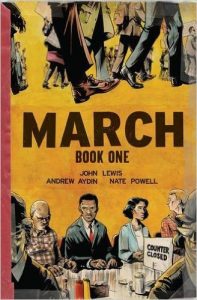 excellent, for me they were somewhat victims of their hype. As a graphic way to tell John Lewis’ version of events, they were quite good, but at times, the story felt mildly disjointed. Some of this is, I presume, because the subject matter is just John Lewis recollecting things. But, I would’ve liked to see it organized in a way that carried the emotional arc more. I know this is asking a lot of a memoir, but compare it to, for example, Maus by Spiegelman. The latter is also a true story, and also a memoir of sorts, but every moment seems to be there for a reason.
excellent, for me they were somewhat victims of their hype. As a graphic way to tell John Lewis’ version of events, they were quite good, but at times, the story felt mildly disjointed. Some of this is, I presume, because the subject matter is just John Lewis recollecting things. But, I would’ve liked to see it organized in a way that carried the emotional arc more. I know this is asking a lot of a memoir, but compare it to, for example, Maus by Spiegelman. The latter is also a true story, and also a memoir of sorts, but every moment seems to be there for a reason.
One way in which the books are similar, yet different, is the use of framing devices. In Maus, it’s the son of the Shoah survivor’s attempt to make sense of himself and his relationship to his parents. I found it very strong, in part because it’s non-obvious – the father and son spend most of their time together fighting. It results in a beautifully nuanced character. The framing device in March is a bit more obvious and sentimental, and it’s not clear to me what it adds artistically.
That said, it’s still a fine series, and a great addition to your graphic novel collection. For me, it was kind of like Persepolis – great stuff, but it was missing that deeper note that the author seemed capable of.

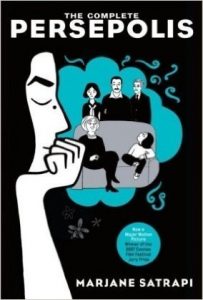 Revolution as the daughter of secular leftist parents. It’s not the most beautiful of graphic novels, but the art hits the right tone. Although I enjoyed it, and recommend it if you’re interested in the history, I have trouble putting it on the same pedestal as books like Fun House by Bechdel. Bechdel’s book both recounts stories from her life and weaves them into a sort of visual poem. Satrapi’s stories are fascinating (viscerally, they are more interesting than Bechdel’s), but they don’t really come together as something.
Revolution as the daughter of secular leftist parents. It’s not the most beautiful of graphic novels, but the art hits the right tone. Although I enjoyed it, and recommend it if you’re interested in the history, I have trouble putting it on the same pedestal as books like Fun House by Bechdel. Bechdel’s book both recounts stories from her life and weaves them into a sort of visual poem. Satrapi’s stories are fascinating (viscerally, they are more interesting than Bechdel’s), but they don’t really come together as something.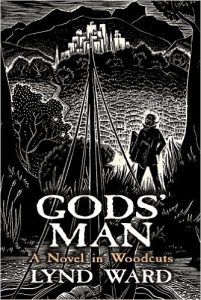 of what would later become the Graphic Novel. It’s a beautiful, if simple, story told in a series of gorgeous woodcuts with an incredible 1920s art deco feel to them. I went through it somewhat quickly, but I find the images stay with me. Definitely worth a look.
of what would later become the Graphic Novel. It’s a beautiful, if simple, story told in a series of gorgeous woodcuts with an incredible 1920s art deco feel to them. I went through it somewhat quickly, but I find the images stay with me. Definitely worth a look.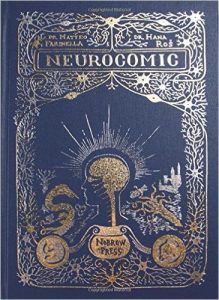 neuroscience and history of brain studies. It’s an interesting idea, but it didn’t really work for me. The artwork is very rudimentary, and the concepts are fairly straightforward. It didn’t feel to me like the ideas especially benefited from a comic format. The book did have an interesting sort of dreamy feel, in which a man goes through a sort of Alice in Wonderland style world of the mind, but ultimately I didn’t feel the concept paid off so much as provided occasional enigmatic bookends to sections.
neuroscience and history of brain studies. It’s an interesting idea, but it didn’t really work for me. The artwork is very rudimentary, and the concepts are fairly straightforward. It didn’t feel to me like the ideas especially benefited from a comic format. The book did have an interesting sort of dreamy feel, in which a man goes through a sort of Alice in Wonderland style world of the mind, but ultimately I didn’t feel the concept paid off so much as provided occasional enigmatic bookends to sections.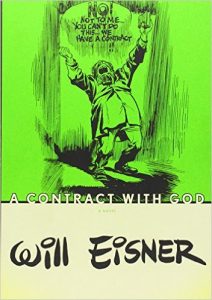 considered the first serious graphic novel. Given that pedigree, it’s interesting to point out that the book is in fact somewhat transitional between books and comics, containing large sections of (hand-drawn) text, with somewhat simple drawings. I didn’t find the stories themselves particularly amazing (sorry if that’s utterly without class to say!) but they aren’t bad, and they are well drawn. And, as a window into the history of comics, it’s quite good. Incidentally, if you are interested in the history of Jewish New York, there’s a lot here for you as well.
considered the first serious graphic novel. Given that pedigree, it’s interesting to point out that the book is in fact somewhat transitional between books and comics, containing large sections of (hand-drawn) text, with somewhat simple drawings. I didn’t find the stories themselves particularly amazing (sorry if that’s utterly without class to say!) but they aren’t bad, and they are well drawn. And, as a window into the history of comics, it’s quite good. Incidentally, if you are interested in the history of Jewish New York, there’s a lot here for you as well.